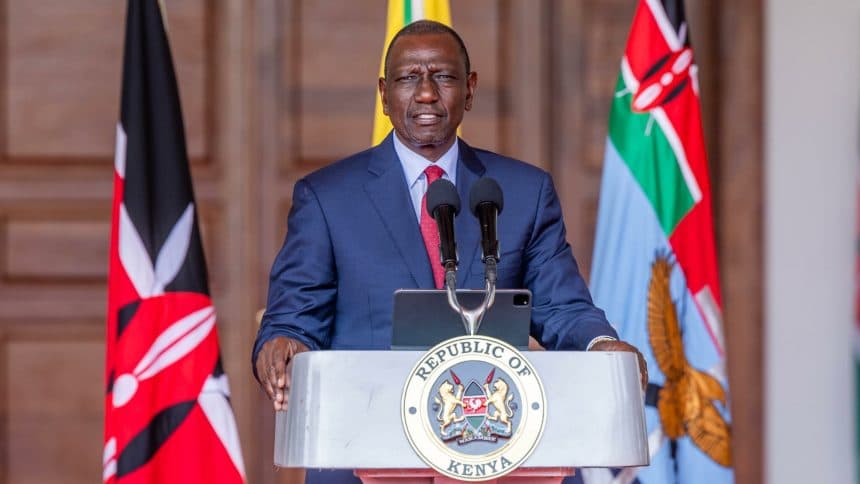Loading News Article...
We're loading the full news article for you. This includes the article content, images, author information, and related articles.
We're loading the full news article for you. This includes the article content, images, author information, and related articles.
Sweeping regulatory reforms aimed at curbing fraud and the political weaponisation of donations could unintentionally dismantle Kenya's deeply-rooted tradition of community fundraising, a critical social safety net for millions.

NAIROBI, KENYA – Wednesday, 26 November 2025, 04:45 EAT – Kenya's revered culture of 'harambee', a cornerstone of community self-reliance and social support, is facing an uncertain future as new government regulations on fundraising take effect. In a widely discussed opinion piece published Tuesday, 25 November 2025, in the Daily Nation, Maurice Omondi, the chairperson of the Kenya Association of Fundraising Professionals (KAFP), warned that while the reforms are driven by legitimate concerns, they risk stifling the spontaneous generosity that defines Kenyan society.
The new legal framework is the government's response to growing public concern over the misuse of charitable funds, the protection of citizens from fraudulent schemes, and the increasing use of high-profile donations as a tool for political influence. According to Omondi, who also serves as the manager of the CPF Foundation, the challenge lies in striking a delicate balance: implementing necessary oversight without extinguishing the spirit of giving that sustains countless families, community projects, and social initiatives across the nation.
The debate has been most pronounced within religious circles, a primary channel for community fundraising. A landmark decision by the Kenya Conference of Catholic Bishops to decline large, politically-charged donations has intensified the national conversation. The bishops argued that accepting such contributions could compromise their moral authority and entangle the church in political controversies.
This stance, however, is not universally shared. Leaders within some Pentecostal denominations have countered that rejecting donations without concrete evidence of wrongdoing is unjust and hampers their ability to minister to their congregations. They propose a model of discreet giving, where political figures can contribute without the public spectacle, thereby avoiding controversy while still supporting church activities. This schism highlights the complex interplay between faith, finance, and politics that the new regulations seek to navigate.
While the focus has often been on high-level political and religious fundraising, experts argue the greatest impact of restrictive laws could be felt at the grassroots level. The 'harambee' tradition extends far beyond large, organized events; it includes informal collections for school fees, medical bills, and funeral expenses that form a vital, immediate social safety net where state support is lacking.
Critics of a heavy-handed regulatory approach fear that cumbersome compliance requirements could prove prohibitive for these smaller, community-based initiatives. If every local fundraiser requires complex registration and reporting, the spontaneity and accessibility that make 'harambee' effective could be lost. Omondi advocates for a more nuanced system, proposing tiered regulations that differentiate between large-scale national appeals and small, local efforts. Such a system would also need to provide clear, simple guidelines for churches and other community organizations to follow.
As traditional fundraising channels face new scrutiny, the landscape may be shifting in favour of corporate philanthropy. The new rules could inadvertently create opportunities for businesses to play a larger, more structured role in social support. For companies with robust Environmental, Social, and Governance (ESG) strategies, aligning their philanthropic efforts with the new compliance standards can serve as both a social good and a corporate advantage. This transition could see a move away from ad-hoc public collections and towards more formalized, long-term partnerships between the private sector and non-profit organizations.
The path forward, as outlined by fundraising professionals, is not a rejection of regulation but a call for its thoughtful application. The core recommendation is a balanced approach that safeguards the 'harambee' culture while enhancing accountability and transparency. This includes not only tiered regulations but also robust support systems to help local foundations and community groups adapt to the new legal environment. Protecting donor privacy while ensuring transparency is another critical challenge that must be addressed.
Ultimately, the ongoing reforms will determine the future of giving in Kenya. If the government can successfully thread the needle—crafting laws that curb illicit activities without penalizing legitimate community solidarity—it can strengthen the nation's tradition of generosity. However, a failure to achieve this balance risks weakening one of Kenya's greatest social assets, leaving a void that will be difficult to fill.
Keep the conversation in one place—threads here stay linked to the story and in the forums.
Other hot threads
E-sports and Gaming Community in Kenya
Active 6 months ago
Popular Recreational Activities Across Counties
Active 6 months ago
Investing in Youth Sports Development Programs
Active 6 months ago
The Role of Technology in Modern Agriculture (AgriTech)
Active 6 months ago